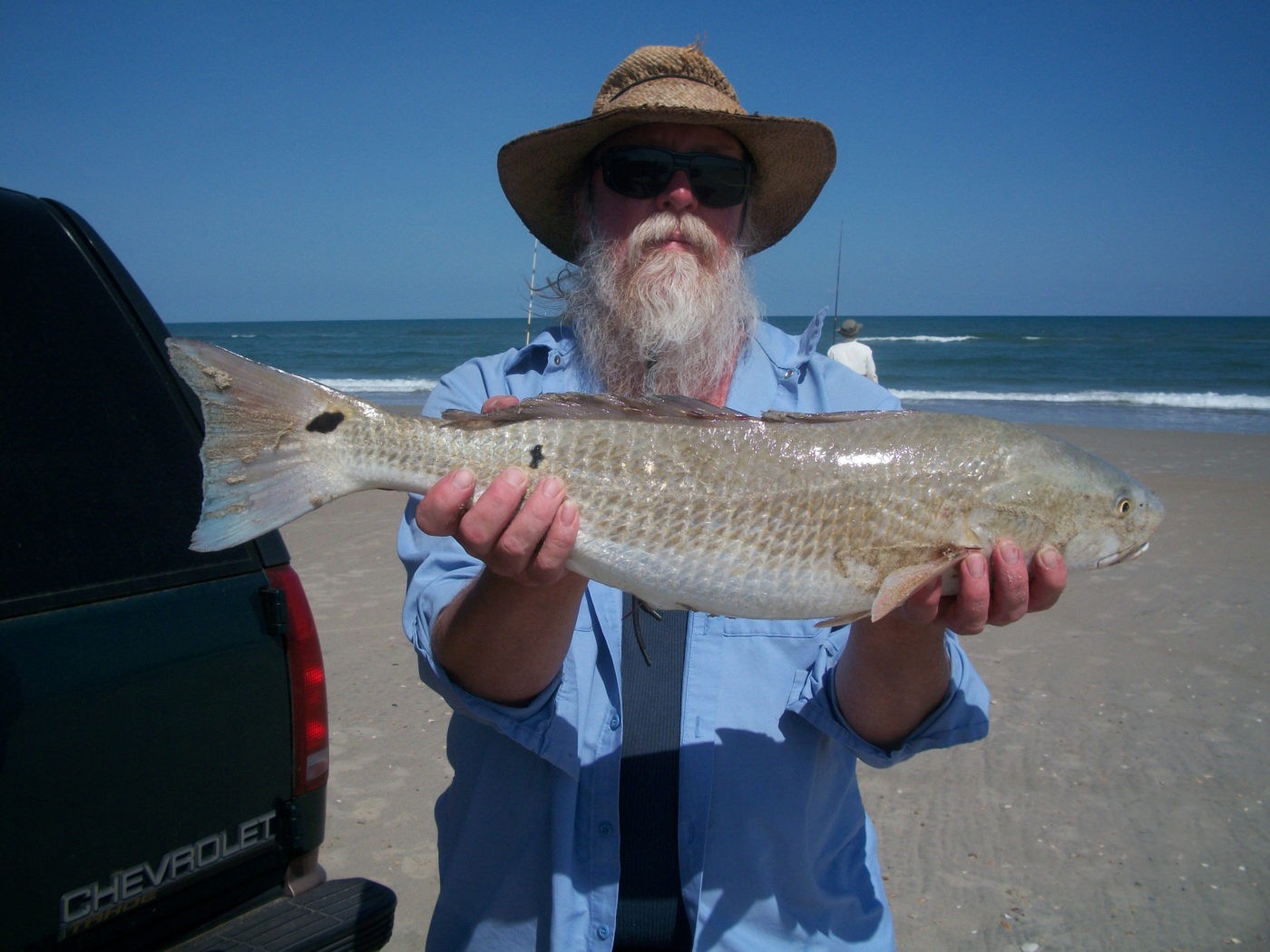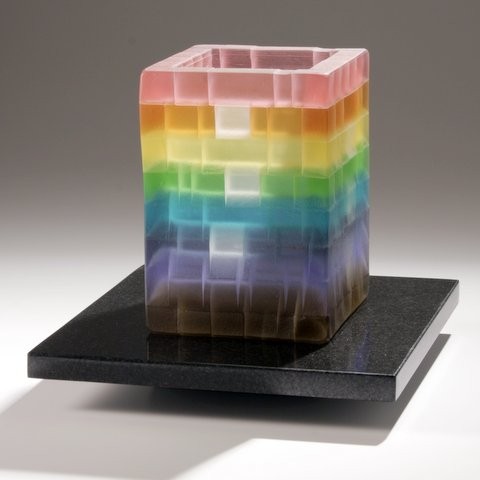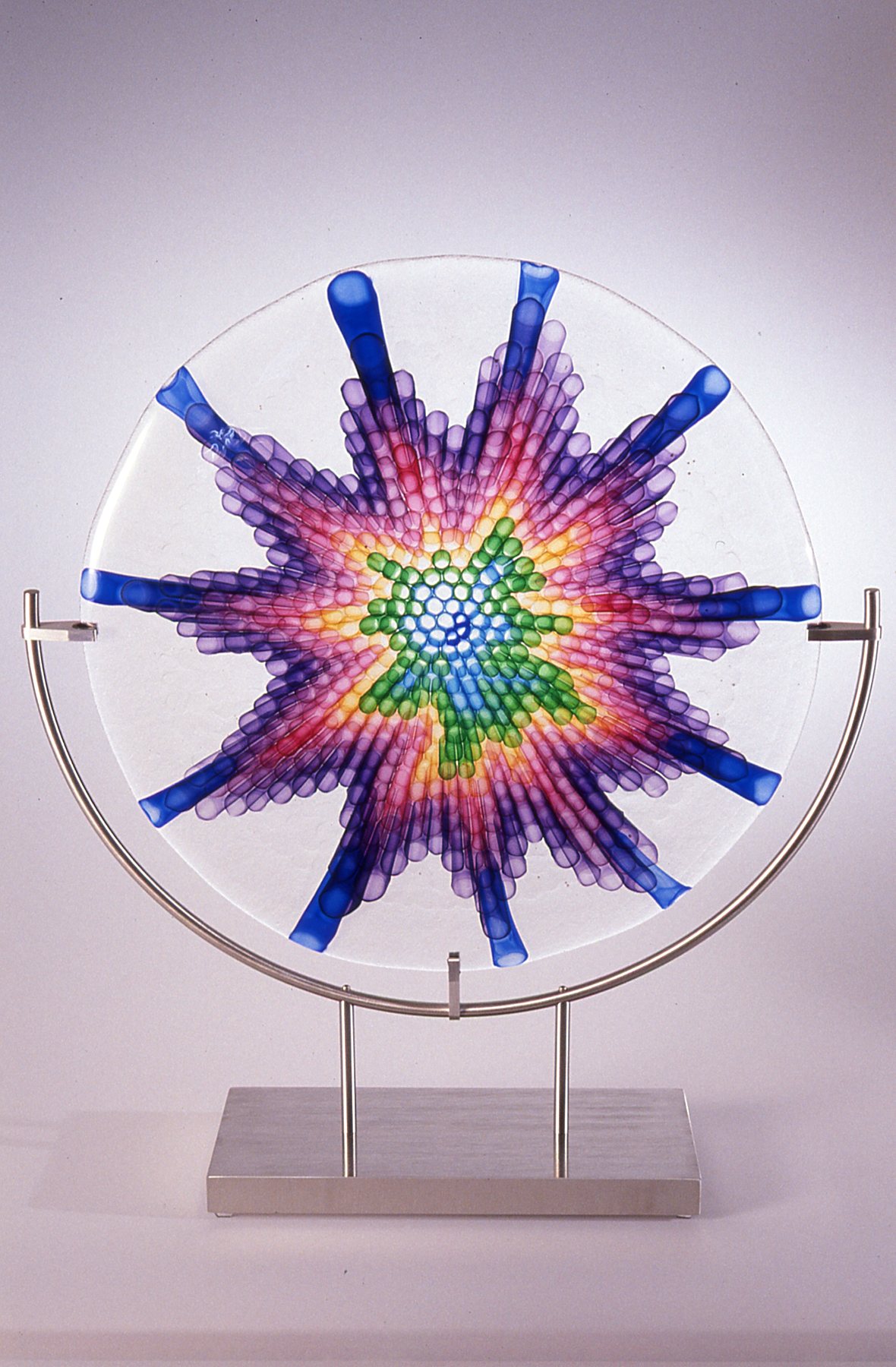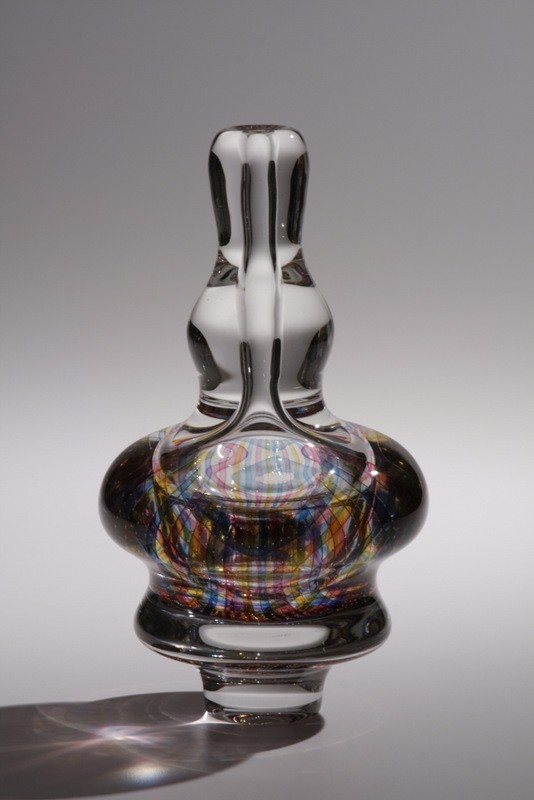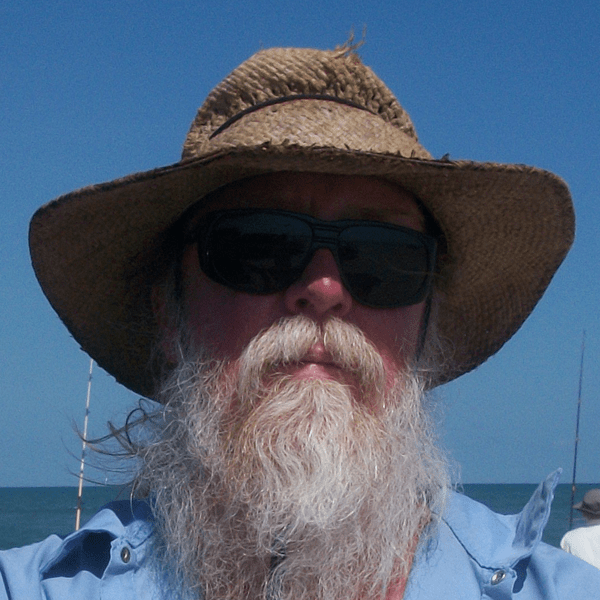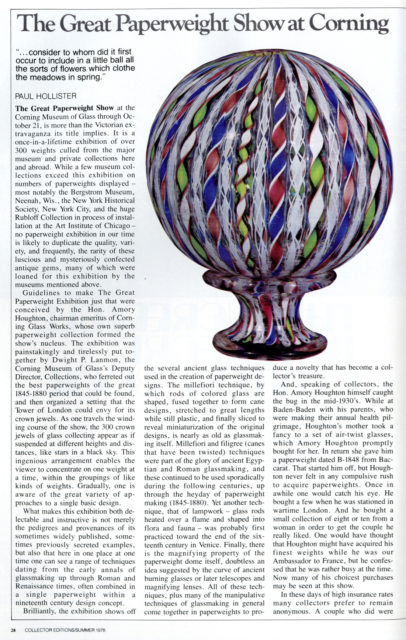In a 1981 interview with Paul Hollister, Gary Beecham discusses his “quilt pattern” pieces, creating work at Lobmeyr and Penland, building ovens, and making his own glass. Paul Hollister Interview with Gary Beecham, November 14, 1981. (Rakow title: Gary Beecham interview [sound recording] / with Paul Hollister, BIB ID: 168599). Clip length: 06:33.
Time stamp: 00:00
Clip 1: Gary Beecham discusses his “quilt pattern” pieces made at Lobmeyr. Clip length: 01:24.
Paul Hollister (PH): Okay. I’m talking with Gary Beecham and it’s, what is it? Saturday, November 14th and we’re at the apartment here and he’s just shown me some slides of—panels. 19, oh, I see. Panels that he’s done, one is 35 by 70 centimeters, two of them are that—three of them are that.
Gary Beecham (GB): One—
PH: Umm.
GB: —three feet by 18 inches—
PH: Three feet by 18 inches.
GB: —and one is two feet by 14 inches.
PH: The three feet by 18 inches is the tall one next to the automobile or something out in the parking lot—
GB: And then this is a detail of that same—
PH: —oh, this is a detail of it, that’s very nice it looks like a weaving, or plaid—
GB: —it’s a quilt.
PH: A plaid quilt weaving.
GB: Each of those are quilt patterns.
PH: Yeah. I’m interested that you use centimeters.
GB: Well, those were made in Europe and that’s the—
PH: Oh, this is Lobmeyr [J&L Lobmeyr, Vienna, Austria].
GB: Right. The three panels that are in centimeters were all made at Lobmeyr and the two that are in inches were both made at the University of Wisconsin-Madison while I was a student.
Time stamp: 01:25
Clip 2: Gary Beecham talks about the complexities of working with different ovens. Clip length: 03:36.
Paul Hollister (PH):—they’re quilted in the upper-right. And then the other three are almost very free-form Kandinsky kind of non-imagery but in lovely coloring. Isn’t that interesting? Huh, so tell me something about them. Were you trying to get them bigger?
Gary Beecham (GB): These? A lot of it is just what colors I have available and what equipment I have to fuse them. I make them as big as the oven that I have available at the time. In Austria I could work up to 35 by 70 centimeters so that was the size that I did. In Madison I had—
PH: [over GB] That’s about ten inches by?
GB: No—
PH: 12? 12 inches, 14 inches about?
GB: Yeah, yeah.
PH: 35.
GB: And they were about an inch thick for the—these two very free pieces. They were quite thick.
PH: And how big of a piece can you do at Penland [Penland School of Craft, Penland, North Carolina]?
GB: I can’t do any—the only one I’ve done down there has cracked on me because the oven was only heated on three sides of the piece, so the fourth side of the pieces was cold—
PH: Mm-hmm.
GB: —and the piece cracked. The one that I had done down there.
PH: Mmm.
GB: The ones I’ve done in the past, the last six I’ve done have all cracked because I haven’t had proper ovens to do them in.
PH: What do you mean three sides? You mean the edges?
GB: What you need is an oven that the top opens up and that the elements are on all four sides of the panel—
PH: Mm-hmm.
GB: If you use an oven where—that opens from the front, then you’ll—your doors don’t—
PH: [inaudible]
GB: Your doors don’t have the elements and they also will tend to leak heat, so that side will be colder and it’s much harder to anneal a piece when it’s only heated on three sides—
PH: Can you make it, you can make an oven?
GB: Yes, I have the frame—
PH: Can’t you put it into the top?
GB: I have the framework made for an oven.
PH: Sydney Cash has got two of them. One of them is about that big and that high, and about this big.
GB: Mm-hmm.
PH: And he did them, it was fascinating to me, without—this is a top feed thing, he just lifts the top—
GB: Right.
PH: —where he has a counterbalancing weight and he just hauls it up when—
GB: Right.
PH: —he wants to. And I assume that the heat is coming from all four sides. But he did that just assembling the bricks, no mortar or anything.
GB: Right—the ovens that I use, I prefer the newer materials, the ceramic blankets etcetera because with these panels I—once they’re fused I have to cool them as quickly as possible or I will get surface devitrification. If they’re at a very high elevated temperature for a long period, the surface will tend to get hazy. A brick oven holds the heat a lot, it takes—let’s say I was using a brick oven it would take much more power to get them up to melt and it also takes a long time to get them back to the annealing point. I prefer the ceramic blanket ovens because I can get them up very fast to the fusing temperature and then I can just throw the oven open and I cool them as quickly as possible—
PH: What’s the fusing temperature?
GB: About 1600 Fahrenheit.
PH: Yeah. Yeah.
Time stamp: 05:05
Clip 3: Gary Beecham talks about working with his own glass rods. Clip length: 01:28.
Paul Hollister (PH): And this is a—
Gary Beecham (GB): [over PH] I’m using—
PH: —a plate glass—
GB: —no, I make up all my color from the tank, so that it all fits. I don’t use any plate glass. I use all rods of glass.
PH: And they’re rods that you make?
GB: Right, rods that I make.
PH: They’re not Kugler rods.
GB: No. I use Kugler to color the rods, let’s say if I want to make a ruby red rod—
PH: Mm-hmm.
GB: —I’ll take and use a fairly large chunk of Kugler, pick that up on the pipe, blow a bubble into it, case it once or twice with crystal, and then blow a fairly thin cup, as if you were gonna make an overlay—
PH: Mm-hmm.
GB: —and then, that cup I take and fill up with crystal—
PH: Mmm.
GB: —right in the center of it, I get several gathers, come over, put it inside of the cup, and then heat and form it into the size and shape that I need to pull a piece of cane. And then I take and pull that out, the center part of—
PH: Wow.
GB: —the cane will be let’s say a quarter of an inch, to half an inch in diameter—
PH: Mmm.
GB: —and those I use more for vessels or, for let’s say, one of these textile panels. Where I need very fine lines—
PH: Yeah.
GB: —and the ends of the pull are always thick, where they attach to each pipe that you’re pulling with—
PH: Uh-huh.
GB: —so that the ends of the pull is what I used for the these type of very free panels where I use big chunks of color going through them.
PH: Yeah.
Permalink